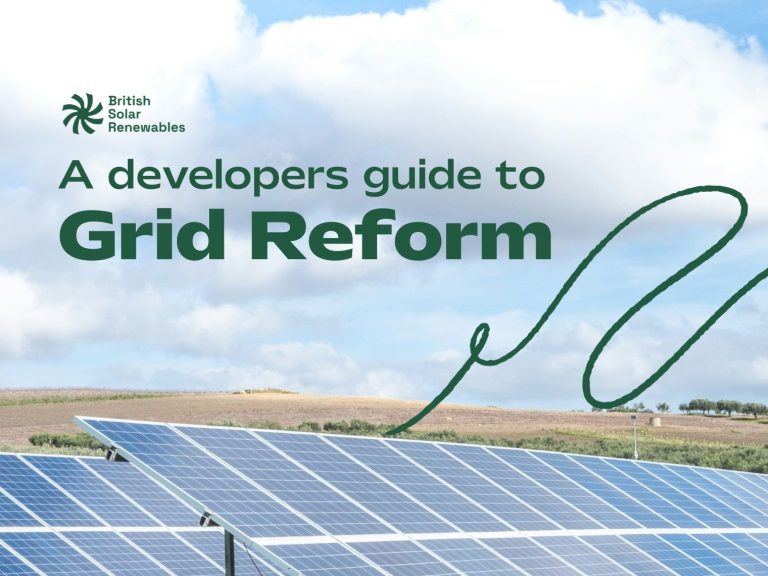How do you solve a problem like REGOs.
 Renewable Energy Guarantees of Origin certificates – or REGOs – aren’t supporting new clean generation or helping cut carbon, writes Mark Hollands, Energy Strategy Director at BSR Energy.
Renewable Energy Guarantees of Origin certificates – or REGOs – aren’t supporting new clean generation or helping cut carbon, writes Mark Hollands, Energy Strategy Director at BSR Energy.
A fresh approach is urgently needed if we are to achieve the UK’s net zero 2050 target and help stimulate the growth of large-scale renewable electricity.
There is a problem with green electricity. The current system of accounting for the provenance of green electricity does not reflect the benefit that consumers expect. The REGO certificate was developed to meet an EU requirement for all member states to be able to record and report what proportion of electricity consumption was from renewable sources and are issued at a rate of 1 REGO per MWh (Megawatt hour) of electricity generated.
Suppliers use the REGO to calculate their Fuel Mix Disclosure, which is what consumers and customers of suppliers are shown to demonstrate how “green” a tariff or company is. REGOs can only be used once to demonstrate that a unit of electricity is from a particular renewable energy source.
But, they can be bought and sold separately from the actual unit of electricity that came from the renewable generator. Because of this the price suppliers pay for REGOs is based on a simple supply/demand economic, and because there is currently sufficient renewable generation capacity to meet demand, that price is low at c. 30p-50p per certificate which equates to only around 1% of the wholesale cost of electricity. In addition, almost all this renewable capacity is subsidised generation – so is already being paid for through consumer bills.
These economic conditions mean that unfortunately, this system does nothing to support new, unsubsidised, renewable generation, and nothing to cut carbon emissions.
Critics of the system see REGOs as a loophole that allows suppliers to become seemingly “green” overnight for a rock bottom price, without actually forming relationships directly with renewable generators.
This is true but doesn’t get to the crux of the problem, which is that buying power from old, subsidised renewable generation is currently treated the same as that from new, unsubsidised renewable developments. This is key because we need about 3GW of new renewable generation capacity annually if we are to achieve our 2050 net-zero target and work towards averting a catastrophic climate breakdown. This means that REGOs from subsidised generation are not truly green as they do not incentivise the build of new renewable developments – known as “additionality”.
Change is needed, and needed fast, to enable us to meet the net-zero 2050 target. We need a sustainable market to deliver the sort of consistent increase in renewable capacity, and that means a move away from subsidy towards market-based mechanisms.
One simple resolution would be to introduce a new certificate that is only for new, unsubsidised renewables – let’s call it the Green Renewable Energy Endorsement certificate (GREEn). The GREEn would place new value on additionality, by allowing suppliers to distinguish between old and new renewable generation. Suppliers will be able to launch “additional” tariffs allowing consumers to buy a product that truly supports the fight against catastrophic climate change.
One immediate challenge will be educating consumers about the difference between a REGO backed green tariff, and a “new GREEn” tariff as at the moment many people believe that by buying power from a “green” electricity supplier, or a “green” tariff is enough, so communicating the importance of new generation will be key. As a nation we’re on the right track on that front, general awareness of climate change is on the rise and has increased by over 75% from Q1 of 2018 to Q1 of 2019¹.
This awareness has driven new UK Government policies, such as the 2050 net-zero carbon target, but more must be done to educate consumers about the plan to hit that target. Decarbonising the electricity sector is a relatively easy and quick win – and one that leads to lower long-term power pricing. Once consumer demand for additional tariffs grows suppliers would be incentivised to launch longer-term GREEn Purchase Agreements (GPAs) with developers, owners and operators of new generation and the price of GREEns would rise, helping to finance the delivery of new subsidy-free renewable generation, and recognising the part it is playing in reducing carbon emissions.
As the market for REGOs has transformed, now is the time for OfGEM and BEIS to reassess new ways to provide the most support to renewables in the subsidy-free market context. It is clear that decarbonising the UK’s energy industry and building new cost-effective renewables will be key if we are to meet our 2050 net-zero target.
GREEns have the potential to be the key that unlocks this new unsubsidised clean energy capacity and make electricity more affordable for all in the long term?
Note: ¹ Information taken from Google Trends


